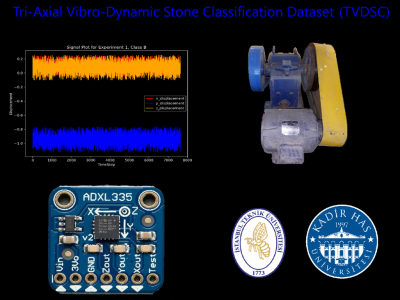Signal Processing

In the domain of gait recognition, the scarcity of non-simulated, real-world data significantly hampers the performance and applicability of recognition systems. To address this limitation, we present a comprehensive gait recognition dataset - GaitMotion- collected using built-in sensors of Android smartphones in an uncontrolled, real-world environment. This dataset captures the walking activity of 24 subjects (14 females and 10 males) above 18 years old and weighing at least 50 kg.
- Categories:
 314 Views
314 Views
The main contribution of this paper is the design of a novel finite time control able to track a reference under the presence of external matched and unmatched disturbances with unknown upper-bounds. The systems under study are nominally linear. The Electronic Throttle Control (ETC) system is a drive-by-wire system in which the direct mechanical linkages between the accelerator pedal and the throttle valve are replaced by sensors and
actuators pairs.
- Categories:
 21 Views
21 ViewsThis document presents a simple method for using time-domain simulations to extract an AC small-signal model of the power stage in a power converter. Such extraction is important for simulating feedback loop gain and assessing the stability of complex power converter topologies, such as resonant converters or converters with advanced switch control. With the proposed approach, a single time-domain simulation run is sufficient to extract the small-signal model, making the process time-efficient.
- Categories:
 109 Views
109 ViewsRadar signals can penetrate non-conducting materials, such as glass, wood, and plastic, which could enable the recognition of user gestures in environments with poor visibility, occlusion, limited accessibility, and privacy sensitivity. This dataset contains nine gestures from 32 participants recorded with a radar through 3 different materials (wood, glass, and PVC) to explore the feasibility of sensing gestures through materials.
- Categories:
 231 Views
231 Views
A deep learning (DL)--based detector is proposed for underwater acoustic (UWA) communication systems using orthogonal chirp division multiplexing with index modulation (OCDM-IM). The proposed high-performance and lightweight network integrates the detection of the index bits and the carrier bits as a whole, employing a squeeze-and-excitation (SE) mechanism enhanced residual neural network (ResNet) cascaded with a bidirectional gated recurrent unit (BiGRU) to detect OCDM-IM signals.
- Categories:
 170 Views
170 ViewsThis dataset addresses the challenge of limited vocal recordings available in secondary datasets, particularly those that predominantly feature foreign accents and contexts. To enhance the accuracy of our solution tailored for Sri Lankans, we employed primary data-gathering methods.
The dataset comprises vocal recordings from a sample population of youth. Participants were instructed to read three specific sentences designed to capture a range of vocal tones:
- Categories:
 213 Views
213 Views
In this letter, a deep learning (DL)--based detector is proposed for underwater acoustic (UWA) communication systems using orthogonal chirp division multiplexing with index modulation (OCDM-IM). The proposed high-performance and lightweight network integrates the detection of the index bits and the carrier bits as a whole, employing a squeeze-and-excitation (SE) mechanism enhanced residual neural network (ResNet) cascaded with a bidirectional gated recurrent unit (BiGRU) to detect OCDM-IM signals.
- Categories:
 191 Views
191 ViewsThis dataset contains Wi-Fi sensing data using Channel State Information (CSI) for various sleep disturbance parameters, from respiratory disturbances, to motion-based disturbances from posture shifts, leg restlessness and confusional arousals.The Wi-Fi CSI data was collected using the Wi-Fi module on the ESP32 Microcontroller units using the esp32-csi-tool.The Wi-Fi CSI respiratory disturbance data is accompanied by respiration belt data taken with the Wi-Fi measurements simultaneously using the Neulog NUL-236 respiration belt logger as ground truth.
- Categories:
 1127 Views
1127 Views
Voice Pre-processing and Quality Assessment Dataset (VPQAD), a scalable resource has been developed to validate various pre-processing techniques and improve voice signal quality in noisy environments. The dataset comprises voice recordings from 50 participants aged 18 to 40, captured in controlled real-life conditions using Audio Technica AT2020 and SHURE SM58 microphones. These high-quality recordings, made under diverse noise levels and settings, could be used for testing and developing voice enhancement algorithms.
- Categories:
 261 Views
261 Views


